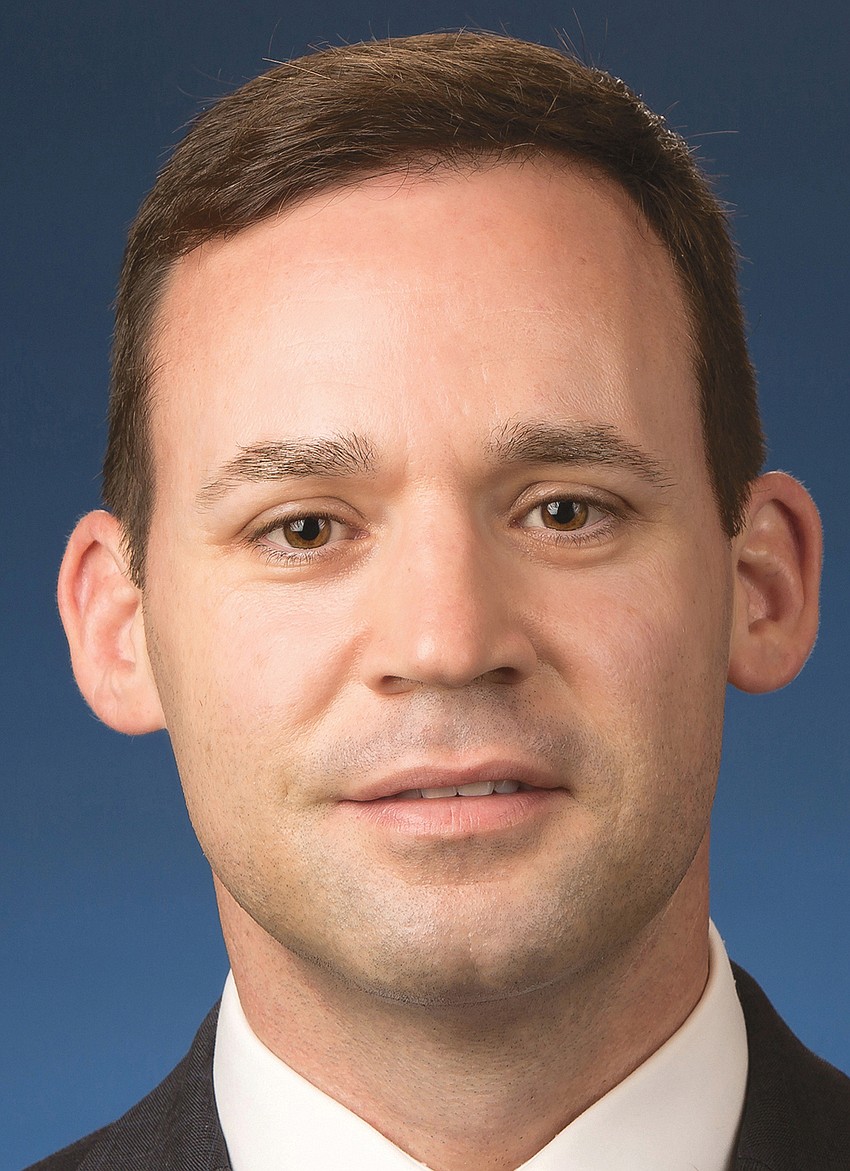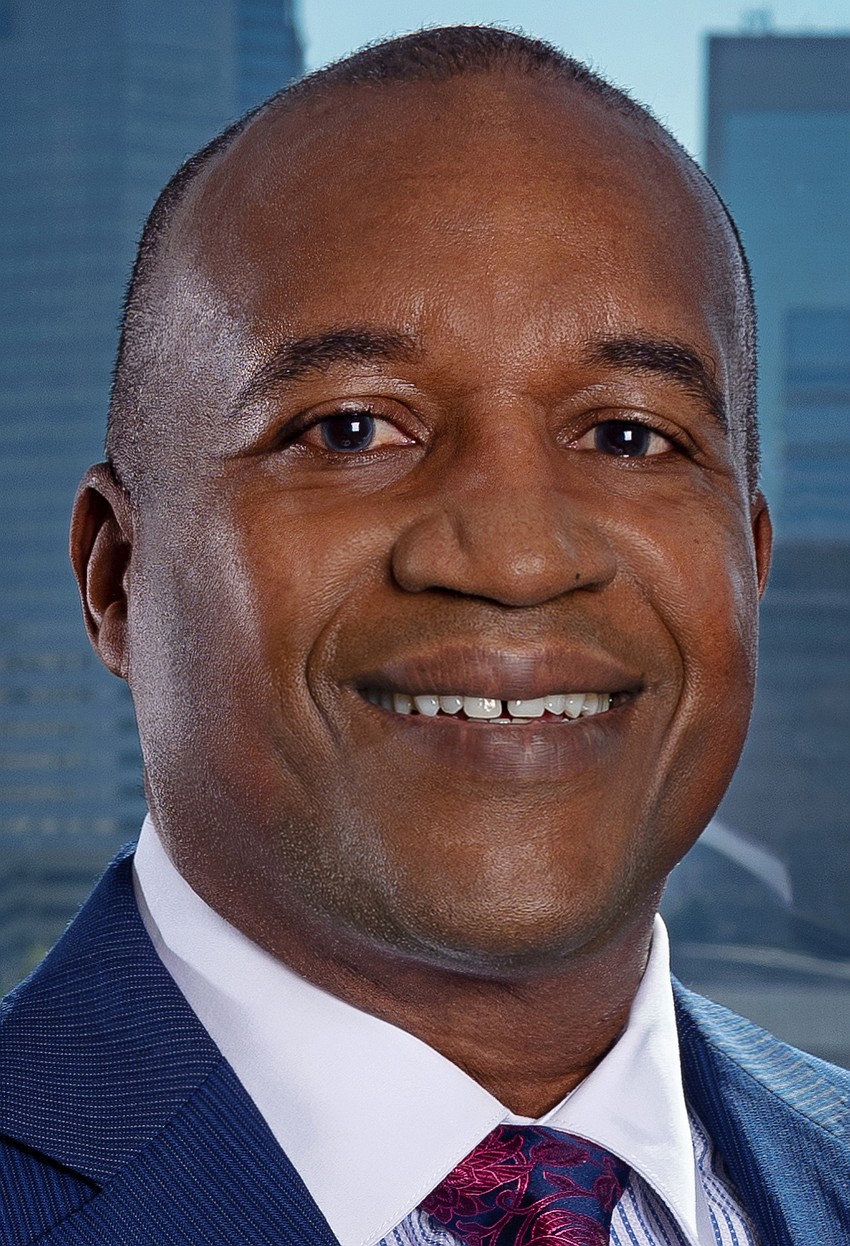
The Jacksonville City Council could soon consider whether to withhold city funding for the final two stages of the Jacksonville Transportation Authority’s autonomous vehicle system, potentially leaving JTA scrambling for money to finish the project after fewer than 4 miles of development.
Council member Rory Diamond says he’s preparing legislation that would cut off city funding for phases two and three of the JTA’s Ultimate Urban Circulator, or U2C, which launched in June with the start of service aboard the $65 million Neighborhood Autonomous Vehicle Innovation system.
NAVI, which operates on a 3.5-mile route mostly along Bay Street, was designed as the first leg of a system that would eventually involve adaptation of the Skyway system for the U2C and expansion of service to neighborhoods surrounding Downtown.

But as JTA works toward designing the Skyway overhaul, Diamond’s potential legislation would eliminate $247 million in city funding that is critical to the last two phases.
Council approved the funding in 2021 through a 6-cent per gallon increase in the local option gas tax, which provided $1 billion for projects that also included the Emerald Trail and road construction.
According to the JTA, there is $240 million in local option gas tax revenue committed to the second phase of the U2C, which is 100% of the cost estimate. Of the $5.65 million committed for Phase III, JTA says $3.9 million is local.
Prompted by ridership numbers that Council member Ron Salem described as “disappointing,” Diamond suggests the money for the U2C would be better spent improving streets and other existing transportation infrastructure than on technology that, in his view, is experimental and subject to quickly being made obsolete by advancements in autonomous vehicle technology.
Diamond suggested diverting some city funds to purchase credits for companies like Uber and Waymo to provide rides for Jacksonville residents.
“We don’t have to spend any money on infrastructure,” Diamond said about his plan. “(It’s a) guaranteed result. (We) can scale it up, scale it down.”
With Diamond and other Council members questioning the system’s costs and benefits, the future of a system that JTA CEO Nat Ford calls an example of “the future of mobility” could be in question.

But JTA, in a statement sent by text message Nov. 19, questioned whether the city could withhold the gas tax money on its own accord, describing it as a “long-term, bilaterally agreed upon funding mechanism ... memorialized in a mutually negotiated interlocal agreement.”
Any changes to the agreement would require bilateral agreement by the city and JTA, the statement said.
The case against the U2C
During a Nov. 4 meeting of the Council Duval DOGE Special Committee, Diamond said he was ready to “pull the plug” on the U2C after JTA reported that about 6,400 riders had used its initial system from its launch in late June through October.
The Neighborhood Autonomous Vehicle Innovation system, which operates along a 3.5-mile route mostly along Bay Street, had drawn an average of 76 passengers per day, less than a third of the 280 per day that JTA projected by 2035.
The $65 million NAVI system is the first phase of the U2C, which if fully built-out would include a $240 million second phase that would adapt the Skyway infrastructure to carry the autonomous shuttles. Ramps would be added to the elevated tramway to allow the vehicles to access surface streets.
The third phase, with an estimated cost of $95 million, would expand the system into Brooklyn, Riverside, San Marco and Springfield.

Council member Jimmy Peluso, whose District 7 includes Downtown, joined Diamond in criticizing the U2C and questioning whether it was drawing enough ridership to justify its cost.
“I do believe that government, when taxpayer dollars are put towards the right things, could be a huge equalizer, and could be a huge way to make sure that we provide upward mobility,” Peluso said.
“I want to make sure that what money JTA spends and what money we put into JTA goes into those efforts to make sure that we’re connecting the city better.”
Observers of City Hall may find it interesting that Peluso and Diamond are in alignment. Peluso is a Democrat, Diamond is a Republican, and the two have differed sharply on issues such as immigration, taxes and funding for social services.
However, while Diamond and Peluso may agree that the U2C has its issues, their solutions differ.
While Diamond says he would rather put the money toward ride-share credits for Jacksonville residents, Peluso seeks alternative mass transit projects, especially introducing light rail systems across Jacksonville.
“Fixed rail is where you can make sure you’re offering a true alternative to getting from one place to another,” he said.
“We shouldn’t be afraid of costs for cost sake. We should recognize what investment takes.”
The U2C was developed as a less-expensive option to light rail. Peluso argues that other cities that have developed light rail or trolley systems – such as Austin, Texas; Charlotte, North Carolina; Kansas City, Missouri; Oklahoma City and Tampa – have seen strong ridership in their systems and an increase in development along routes.

In response to a question from Peluso during the DOGE committee meeting, Ford said that if the U2C isn’t built-out, the alternative would be to rely on buses.
Peluso took exception to the remark.
“City of a million people, we’ll just bus it up. That’s inexcusable to me,” he said.
“I want to see what other rail systems are available for our city to look at, including fixed rail. I want to see a potential option for a rail line that goes up to the airport. I want us as policymakers to see what options are available.”
NAVI was funded by $25 million in federal and state funding, split equally, and $40 million from JTA.
According to an analysis by The Florida Times-Union, the JTA’s cost for providing rides on the shuttle is $370 per passenger.
Beyond the cost of the system and low ridership, criticisms of the system include that it doesn’t operate after 7 p.m., on weekends or during games at EverBank Stadium.
Defenders step up
Ford told the DOGE committee it was unfair to base opinions about the long-term prospects of the U2C based on early ridership figures.
He said he and his leadership staff were confident that the system would meet the projection of 280 riders per day, but said the timing will be determined by how quickly the city’s Downtown revitalization effort progresses.

Ford said use of the U2C will be buoyed by completion of Downtown projects such as the Four Seasons Hotel & Residences, the Rise: Doro apartment building, the new Northbank Museum of Science and History and the University of Florida graduate campus.
“Those developments are going to lead to the ridership that we were projecting,” he said.
In addition, he said NAVI was developed at a fraction of the cost of a streetcar or light-rail system. Those would cost $500 million to $1 billion per mile, he told the DOGE committee.
The JTA did not grant requests for an interview with Ford before the deadline for this story.
In October, Diamond sent a list of questions about the U2C to JTA, including its fallback or scaling plans should anticipated funding sources fall short.
JTA responded it would “continue to monitor and aggressively pursue additional funding to secure the necessary funds to deliver each phase of the project,” but did not specify where that money might come from.
Mayor Donna Deegan, one of the UTC’s most vocal supporters, has said there’s room in Jacksonville for both the U2C and other transportation systems.
“The people who are the biggest naysayers of this are the ones who never wanted to consider autonomous vehicles in the first place and wanted light rail to the exclusion of everything else,” Deegan said on the WJCT Public Media talk show “First Coast Connect.”
“We are an enormous city. There’s room for both.
Council member Raul Arias said he believed that instead of questioning Ford and the JTA about the U2C, his colleagues should ask the Downtown Investment Authority and other city leaders why the progress of Downtown redevelopment hasn’t gone more quickly.
Holon’s investment
Supporters of the U2C also say it is drawing attention to Jacksonville as a leader in autonomous vehicle technology, which helped the city land a commitment by German vehicle maker Holon to build a $100 million, 500,000-square-foot manufacturing plant in North Jacksonville.

During a Nov. 12 media event outside City Hall to promote Holon’s capabilities, Deegan again expressed support for the U2C.
“I don’t think we have to do anything different than what we are doing, beyond making sure that we continue the momentum of moving forward, stay out of our own way and make sure that we do a good job of educating folks in Jacksonville about why these things are such a big deal,” she said.

In April, the JTA board approved a plan to reserve 100 Holon vehicles, including 14 at $409,000 each.
Several Jacksonville officials said Holon’s investment was enough to justify the city’s expenditure on the new technology.
“Altogether, we are looking at $1.8 billion over 20 years,” Deegan said.
“That is $1.8 billion, a game-changing boost to Jacksonville’s workforce and economic viability.”

“What makes this more impactful for me is the fact that it’s job creation, job growth,” Arias said at the news conference
“Ultimately, the biggest growth here is going to be our people, and that’s what I’m here for today to support.”
City officials and a Holon representative also noted that cities around the United States and globally had turned to Jacksonville to see how it was using autonomous technology.
“(During) Monday Night Football recently, I can’t tell you how many calls I got from friends around the country, because we actually made TV. People saw our vehicle internationally, and they were calling to say, ‘What are you doing down in Jacksonville?’” Council member Rahman Johnson said.
“We are setting the trends here in Jacksonville.”
Software situation
While JTA faces the potential loss of city funding, it is dealing with a more immediate problem involving the software behind the U2C system’s autonomous technology.
Oxa, the provider of the software, is changing its focus to industrial use and dropping out of passenger transportation. JTA’s contractor for NAVI, Balfour Beatty, told the authority that Oxa will cut off service for the system at the end of 2026.

Ford told the DOGE committee that Balfour Beatty was working on an alternative that would prevent the JTA from having to operate the shuttles manually while another provider is located and its software is installed. The process could take up to six months, according to reporting by Action News Jax.
Ford said that under its contract with the JTA, Balfour Beatty was obligated to provide NAVI service for five years.
“There are other software providers out there. There’s Mobileye, there’s ADUS Tech. Discussions have already begun with them,” Ford told the committee.
What’s next?
JTA board members did not respond to emails asking them whether they still supported the U2C in light of the pushback from DOGE.
Diamond said that he had been in contact with JTA board members and believed the board’s support for the project was weakening, a process he hopes to accelerate.
In the meantime, Diamond said he believed he could secure the necessary 10 Council votes to approve his plan to divert gas tax funding from the U2C program to repaving Jacksonville’s roads.
Deegan said she doesn’t see an imminent threat to the U2C from Diamond’s potential bill.
“I don’t believe there’s a question about any of this coming to fruition,” she said.
“There’s always a lot of talk about how much things cost… Hopefully, what we’re showing people is this is a very wonderful first step.”